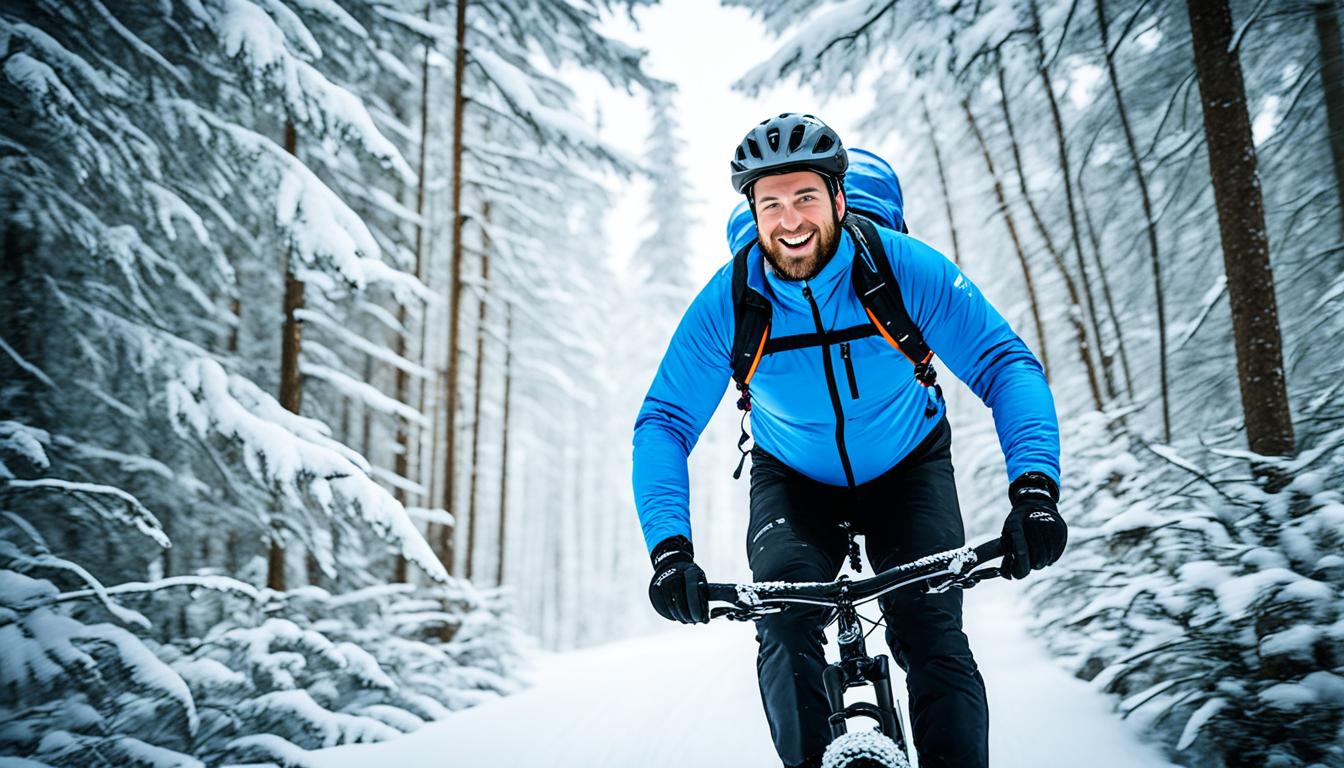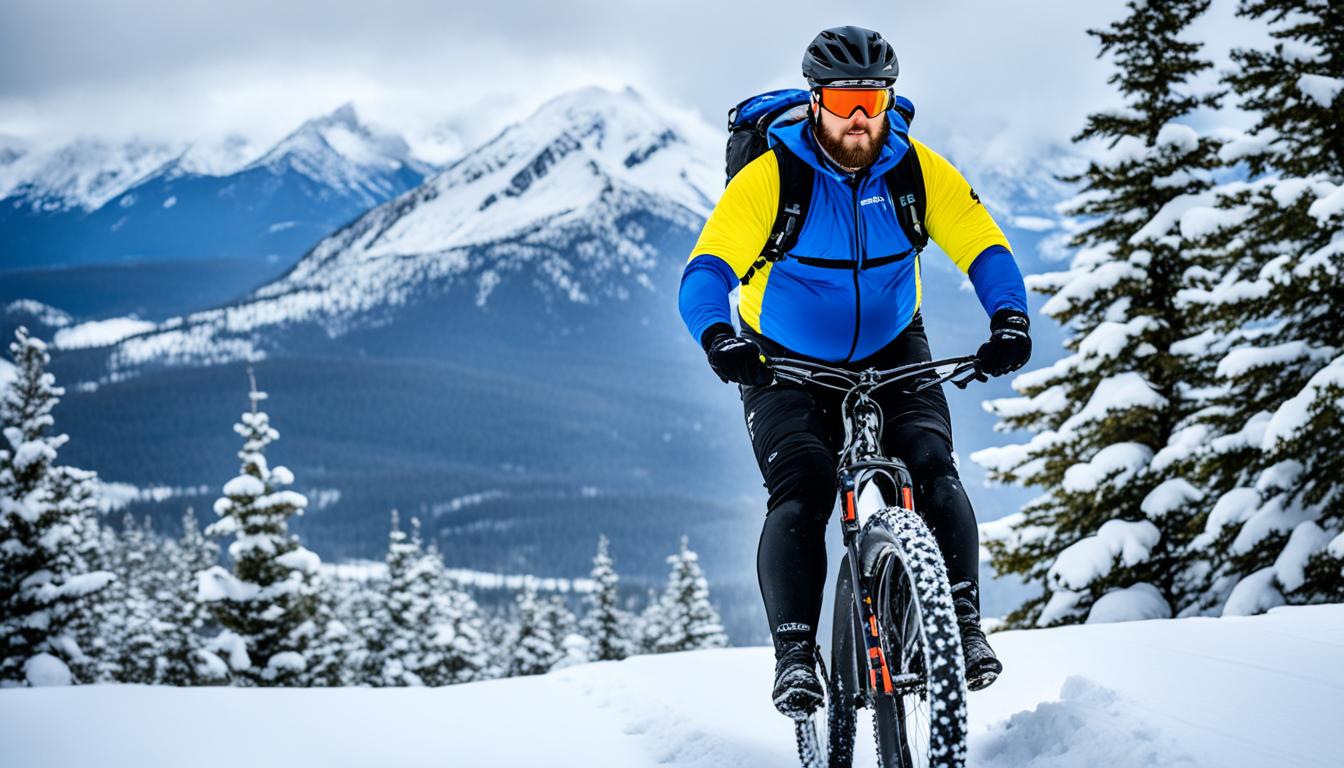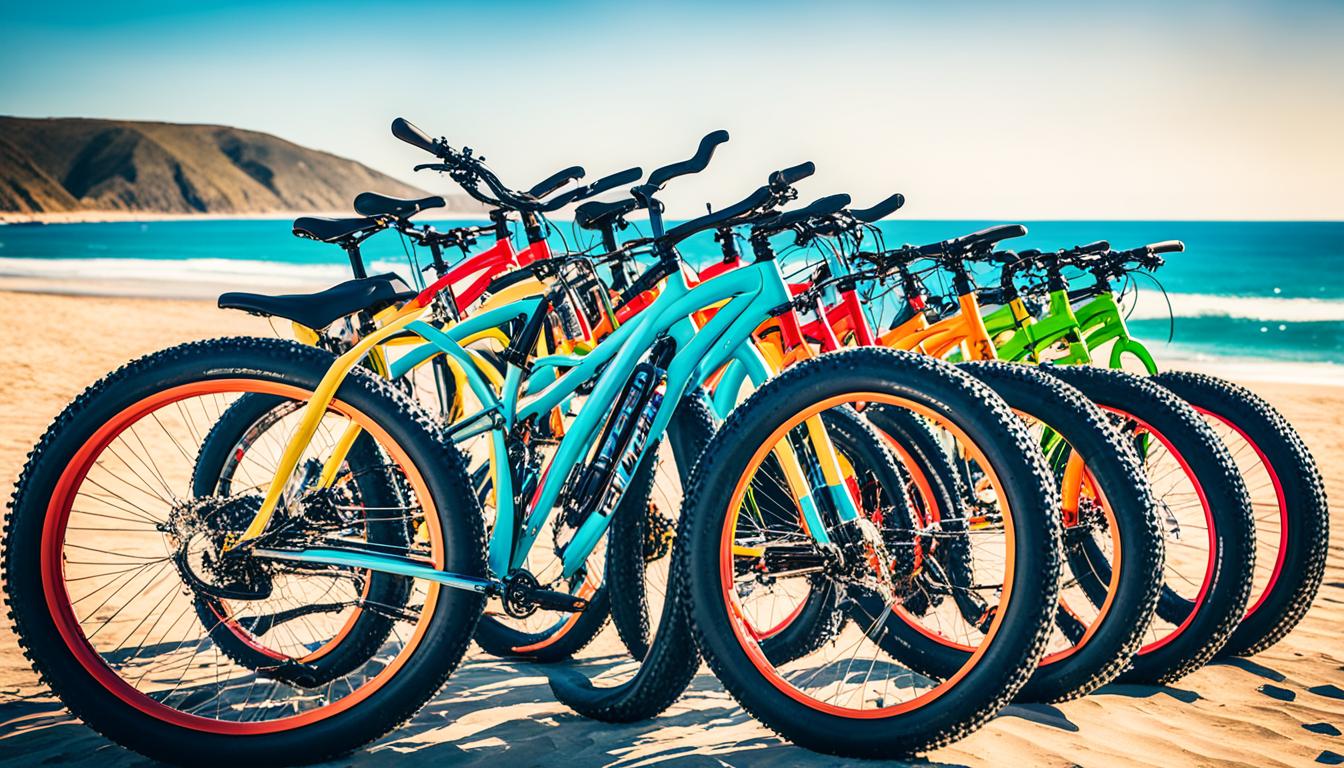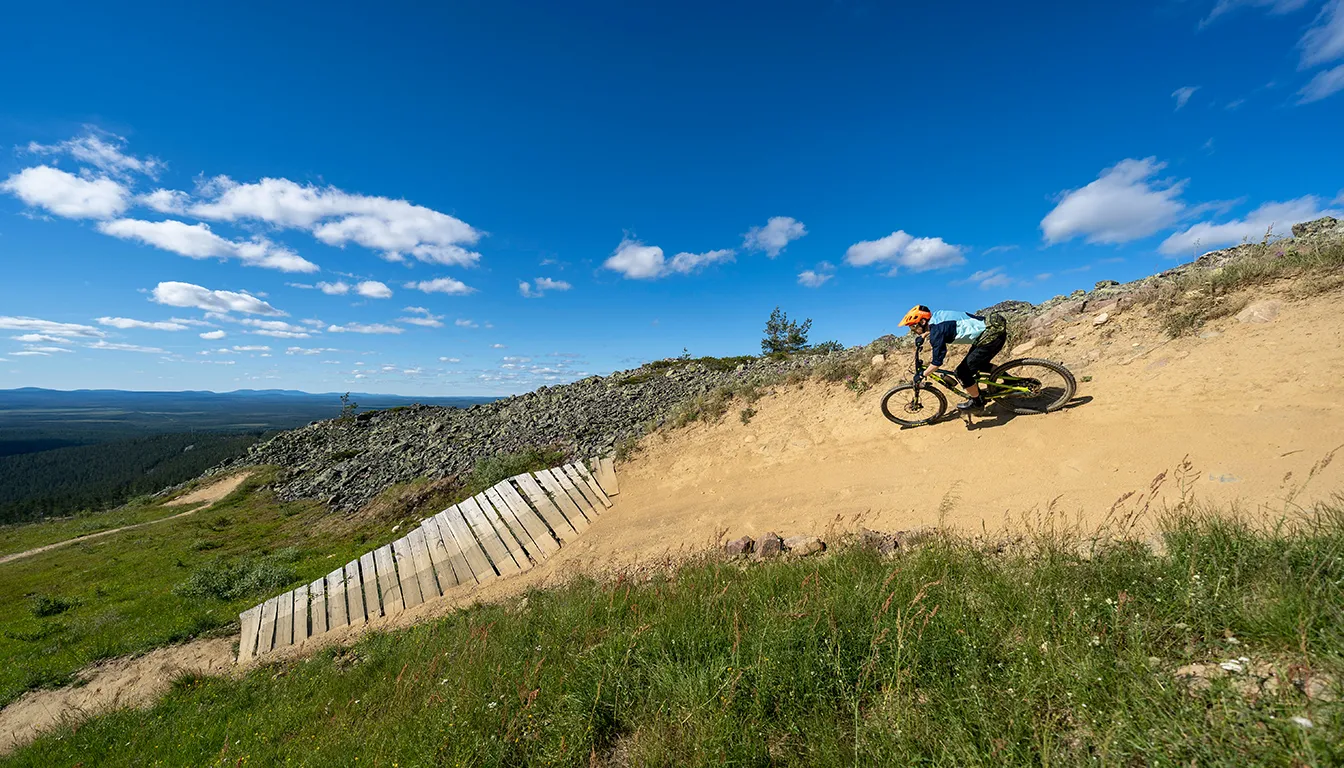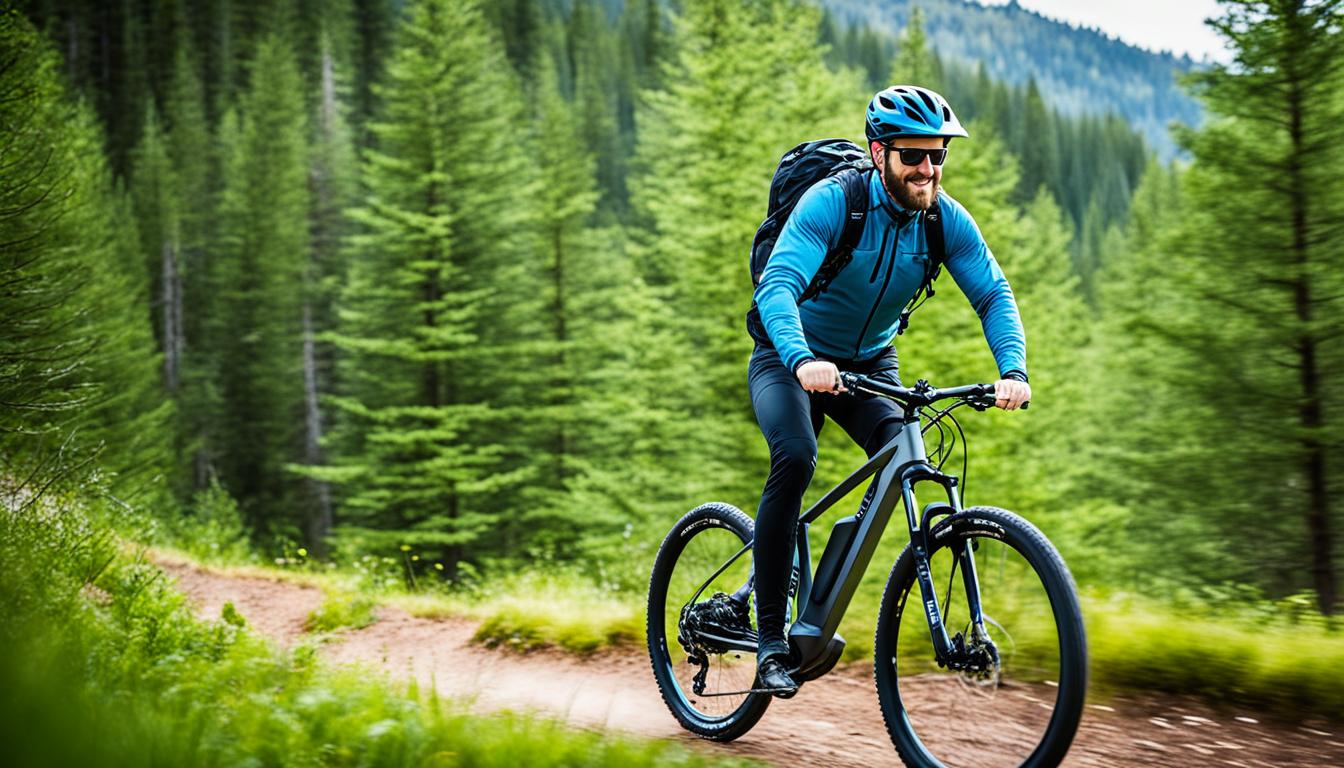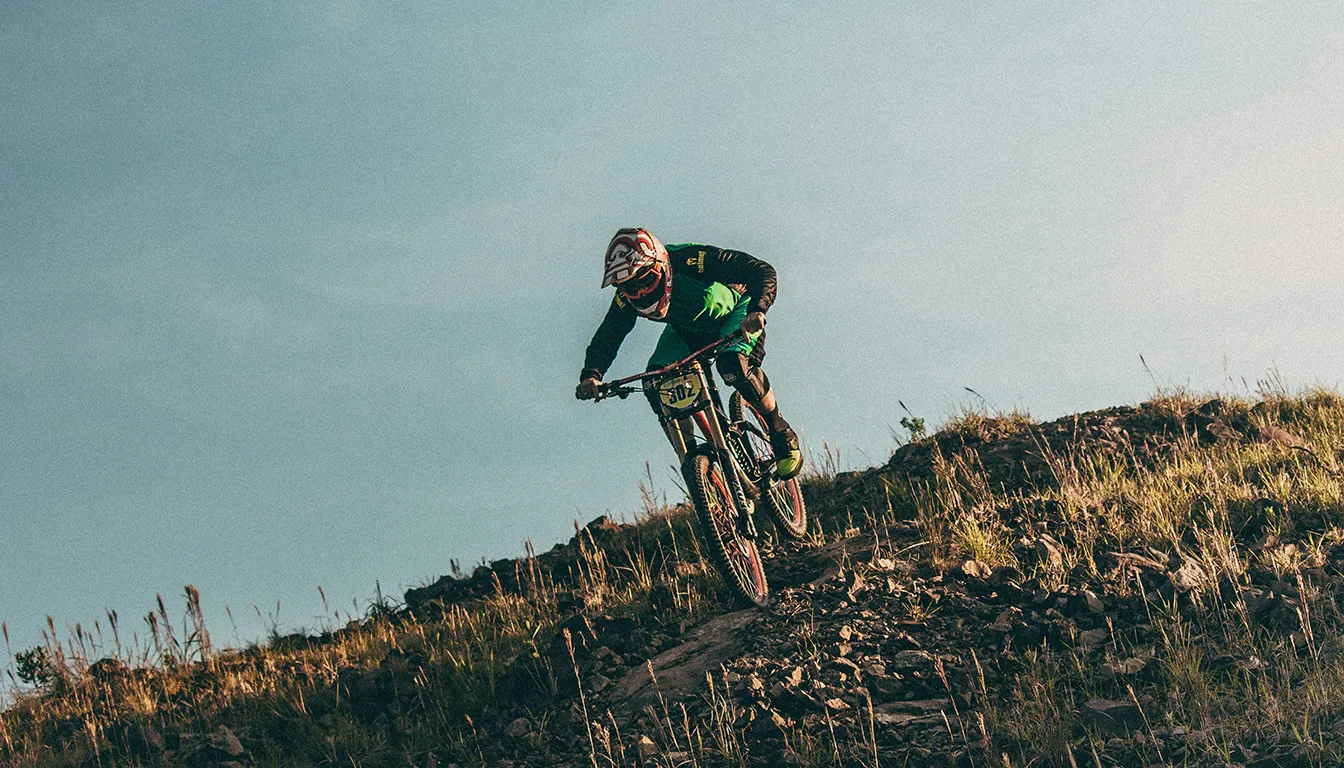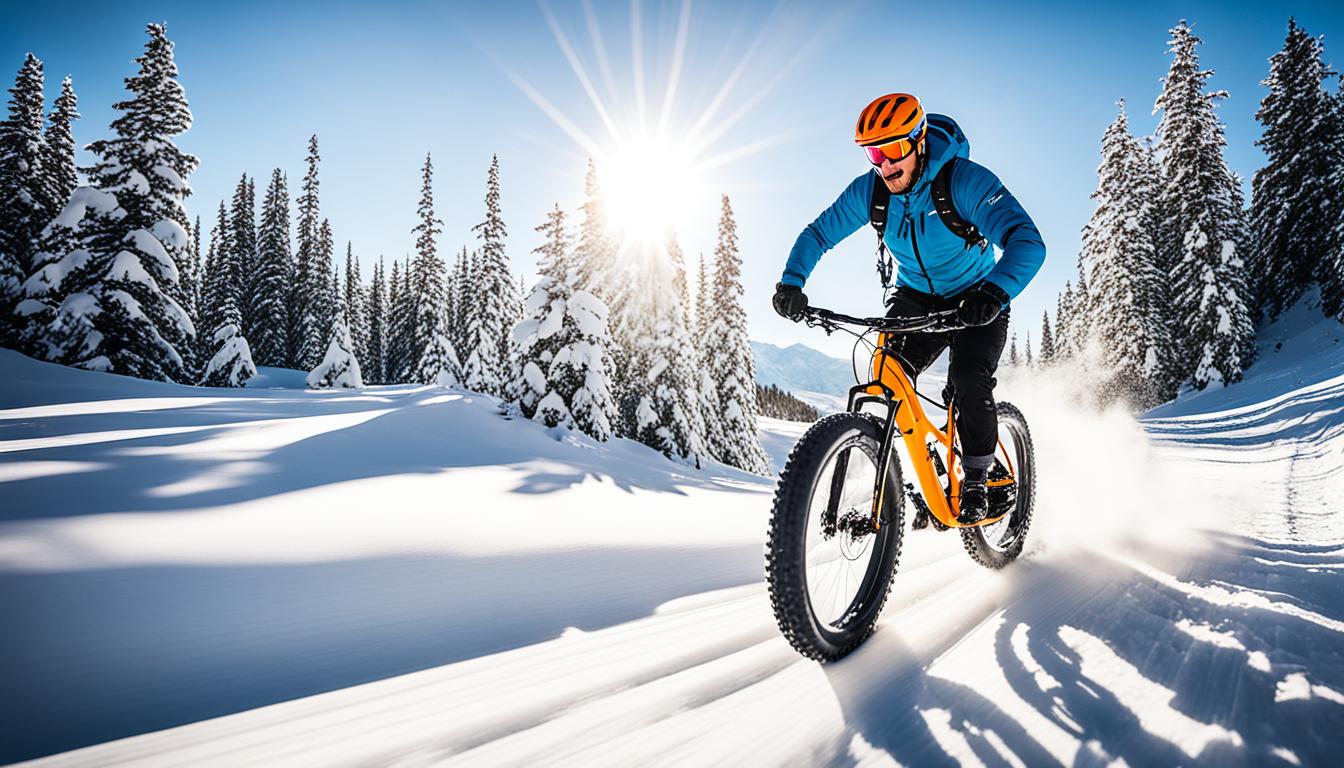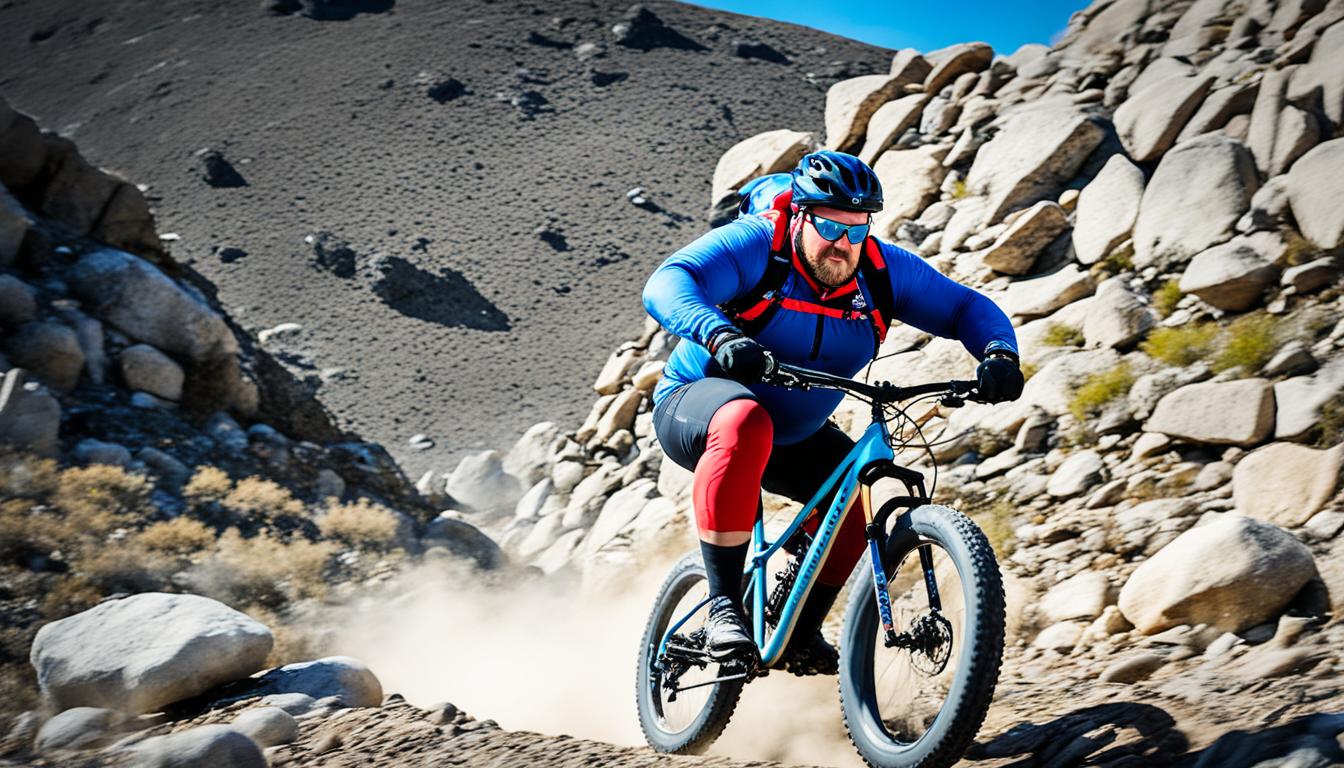Fat biking is an exciting outdoor activity. It mixes the fun of biking with off-road adventures. For those starting out, particularly in the UK’s stunning settings, there’s lots of fun ahead. Fat bikes come with wider tyres. They range from 3.8 to 5 inches wide. This design helps them excel on various surfaces like snow, gravel, and sand.
For newcomers, understanding key UK fat biking tips is vital. These insights help improve your ride and make the most of this all-terrain bike. Fat bikes stand out for their special design tailored for all surfaces. They are also great for staying fit, burning around 600 calories per hour for men and 500 calories per hour for women. This makes them a great mix of health and enjoyment.
This guide will cover more about fat biking’s origins, how they differ, and how to choose one. It’s packed with helpful tips for beginners ready to explore the trails.
Introduction to Fat Biking
Fat biking is becoming very popular with those who love the outdoors. It’s great for all kinds of terrain. Riders use fat bikes with big tyres for better control on snow, sand, and mud. These tyres, 3.5 to 5 inches wide, help keep the bike stable. New riders will see how these features make fat biking fun and easy to learn.
Fat biking is not just exciting; it’s also a great workout. It burns more calories than regular biking. It’s perfect for adventure lovers who want to stay fit. If you’re new, start with easier trails. This makes learning enjoyable and safe. Remember, the right bike size and keeping your bike in good shape are key.
Many newcomers are quickly drawn to fat biking. Some try it three times in just over a week! The sport’s fun and community spirit are attractive. Riding on well-kept snow trails is best. These trails offer great conditions for fat biking. There are also lots of options for renting gear. Fat biking is a fun and healthy way to enjoy the outdoors.
From Snowy Trails to Global Phenomenon
The journey of fat bikes has transformed them from niche variations to an acclaimed cycling trend across the globe. Understanding the history of fat bikes reveals fascinating insights into their inception and growth.
The Origins of Fat Bikes
The emergence of fat bikes can be traced back to Alaska in the 1980s. Riders started modifying their bikes to navigate snowy landscapes. They welded multiple rims together for better snow travel.
This innovation led to the creation of the Surly Pugsley in 2005. This was a major event in the fat bike evolution. Its unique design soon caught the eye of outdoor lovers.
Evolution and Popularity
Since they first appeared, fat bikes have grown in fat biking popularity. They’re now enjoyed by various riders. Their all-year usability significantly broadens the traditional cycling season. This means you can enjoy trails in both summer and winter.
Thanks to improvements like reduced tire pressure and enhanced braking systems, they’re great for beginners and seasoned cyclists alike. This opens up exciting new possibilities for adventure seekers.
If you’re looking to broaden your horizons, why not improve your skills in other cycling areas? Dive into an insightful guide on freeride mountain biking tips to enhance your fat biking journey.
The Key Differences Between Fat Bikes and Mountain Bikes
Comparing fat bikes with mountain bikes shows clear differences. It helps beginners choose based on what they enjoy and where they’ll ride. One key difference is the size and pressure of the tyres. Also, each bike deals with different terrains in its own way.
Tire Size and Pressure
Fat bikes have big tyres, from 3.7 inches to 5 inches wide. Mountain bikes have narrower tyres, 1.8 inches to 2.6 inches. This size gap changes how each bike rides on various grounds. Fat bikes are great for soft ground like sand and snow because they need less tyre pressure, 5-14 psi. However, mountain bikes work best on hard trails with pressures of 22-25 psi. They grip well on rocky paths but can’t handle soft grounds as fat bikes do.
Terrain Adaptability
Fat bikes shine on tough trails where standard bikes might falter. Their wide tyres let them float over mud, sand, or snow. This makes them perfect for thrilling off-road trips. Whereas, mountain bikes are good for many terrains but fall short in very soft sand or deep snow. Knowing how each bike performs helps newcomers pick the right one for their adventure. Looking for advice from seasoned riders is also helpful.
How to Choose Your First Fat Bike
Choosing a fat bike means knowing what you want to do and where you’ll ride. You might like easy trails, tough adventures, or races. Each preference shapes the bike’s build. Learning about bike materials and frames helps you pick right.
Activity Type Considerations
What you want to do with your fat bike matters a lot. For relaxed rides, a simple frame is enough. But, if rough paths call you, a suspension fork makes the ride smoother and easier to control. Some bikes have big wheels and special shapes for even tougher trails. Thinking about your plans helps pick the best bike.
Materials and Frame Options
When picking a fat bike, consider the materials like carbon, titanium, and steel. Carbon is light and quick, titanium lasts long and rides smoothly, and steel is strong and usually cheaper. Knowing these frame options helps choose a bike that matches how you ride. The tire width also affects how the bike handles different grounds.
Getting a fat bike opens up chances for fun trips all year. For detailed tips on fat biking, visit this guide.
Fat Biking for Beginners: Tips and Techniques
Starting your fat biking journey is exciting and a bit tough. Knowing the right tips and beginner techniques helps a lot. Beginning on simple trails helps you get confident and used to your bike.
Starting with Easy Trails
Choosing the right trails is important for new riders. Consider the following:
- Start on hard-packed snow trails for better grip and less slipping.
- Steer clear of ice patches longer than your bike for safer rides.
- Keep your first rides short. Then, as you get better, try longer ones.
It’s vital to stay seated when climbing to keep good traction. A steady pace helps stop your tires from slipping too.
Understanding Your Equipment
Knowing your equipment is key for a great fat biking experience. Here are tips on equipment:
- Adjust tire pressure for the conditions—aim for 5-15 PSI in the winter.
- Dress in layers to handle the cold. The right clothes are crucial in freezing weather.
- Using glove liners and handlebar covers will keep your hands from freezing.
Being smart about your equipment means you’ll enjoy riding on winter trails comfortably. Planning your route is as critical as choosing your gear for a responsible and fun outdoor adventure.
Recommended Fat Bikes for New Riders
Choosing the right fat bike is crucial for new riders. There are various options that fit different budgets and tastes. Affordable fat bikes provide great features without costing too much. Premium fat bikes, although pricier, offer better performance and longer life.
Budget-friendly Options
For starters, some affordable fat bikes stand out:
- Trek Farley 7 – It scores 84, shines in downhill (9.0), and versatility (9.0). It weighs 38 lbs 2 oz and has a 27.5-inch wheel, making it solid for newcomers.
- Fezzari Kings Peak Comp – With an 81 score, it has strong uphill performance (8.0) and is light at 31 lbs. It’s easy to handle for beginners.
- Canyon Dude CF 7 – This model has a 78 score, great for uphill (9.0) and weighs 30 lbs 5 oz. It’s perfect for those starting out in fat biking.
- Giant Yukon 1 – With an 80 score, it has a good balance at 32 lbs 13 oz. It’s reliable and affordable.
Premium Choices to Consider
For those ready to spend more on premium fat bikes, consider these models:
- Salsa Heyday Advent – Though scoring 71, it impresses with its versatile build and solid performance.
- Kona Woo – It weighs 33 lb and has a strong build with hydraulic brakes and 26-inch wheels, ready for various terrains.
- State 6061 Trail+ – Known for its versatility and light frame, it’s ideal for a top-quality biking experience.
Conclusion
Fat biking is an exciting sport open to everyone, from beginners to pros. You may want to try it on snow or sand. Knowing about tyre size, pressure, and frame materials will make it better. Choose a bike that fits your needs, whether you like mountain trails or beach paths.
Improving your skills comes with practice. Joining local groups or events helps you learn from experienced riders. Keeping your bike clean, especially after rough rides, is crucial. As you get better, you’ll add to the community vibe that makes fat biking fun.
The future looks bright for fat biking, attracting more newcomers. It’s a great way to enjoy the outdoors and meet new friends. Ready for an adventure? Hit the trails and discover the joy of fat biking yourself!
FAQ
What is fat biking?
Fat biking is a type of cycling on mountain bikes with big tyres. These tyres can be from 3.5 to 5 inches wide. This makes the bikes great for soft grounds like sand and snow. They work well in many outdoor settings.
Can beginners really enjoy fat biking?
Yes, they can! In the UK, more and more people are trying fat biking. Beginners find it fun and easy to get into. With some tips on how to ride and what gear to use, anyone can start enjoying outdoor trails on a fat bike.
How does fat biking compare to mountain biking?
Fat bikes have much wider tyres than regular mountain bikes. These tyres are at least 3.8 inches wide and run on low pressure. This allows them to move easily over soft ground. They’re great for tough conditions where normal bikes might struggle.
What should I consider when choosing a fat bike?
Think about what you’ll use it for, like trail riding or racing. Look at the bike’s design, what it’s made of, and the size of its wheels. This will help you find a bike that fits your needs and the kind of places you want to ride.
What tips do you have for novice fat bikers?
Begin on simple trails to get better at riding. Know how to adjust your equipment, especially tyre pressure for different grounds. Wear the right clothes for cold weather and always stay hydrated. This will make your ride much better.
Are there recommended fat bikes for beginners?
Yes! Brands like Mongoose, Diamondback, and Devinci have bikes perfect for starters. There are affordable and high-end models. Make sure to pick a bike with features that suit your biking adventures.
